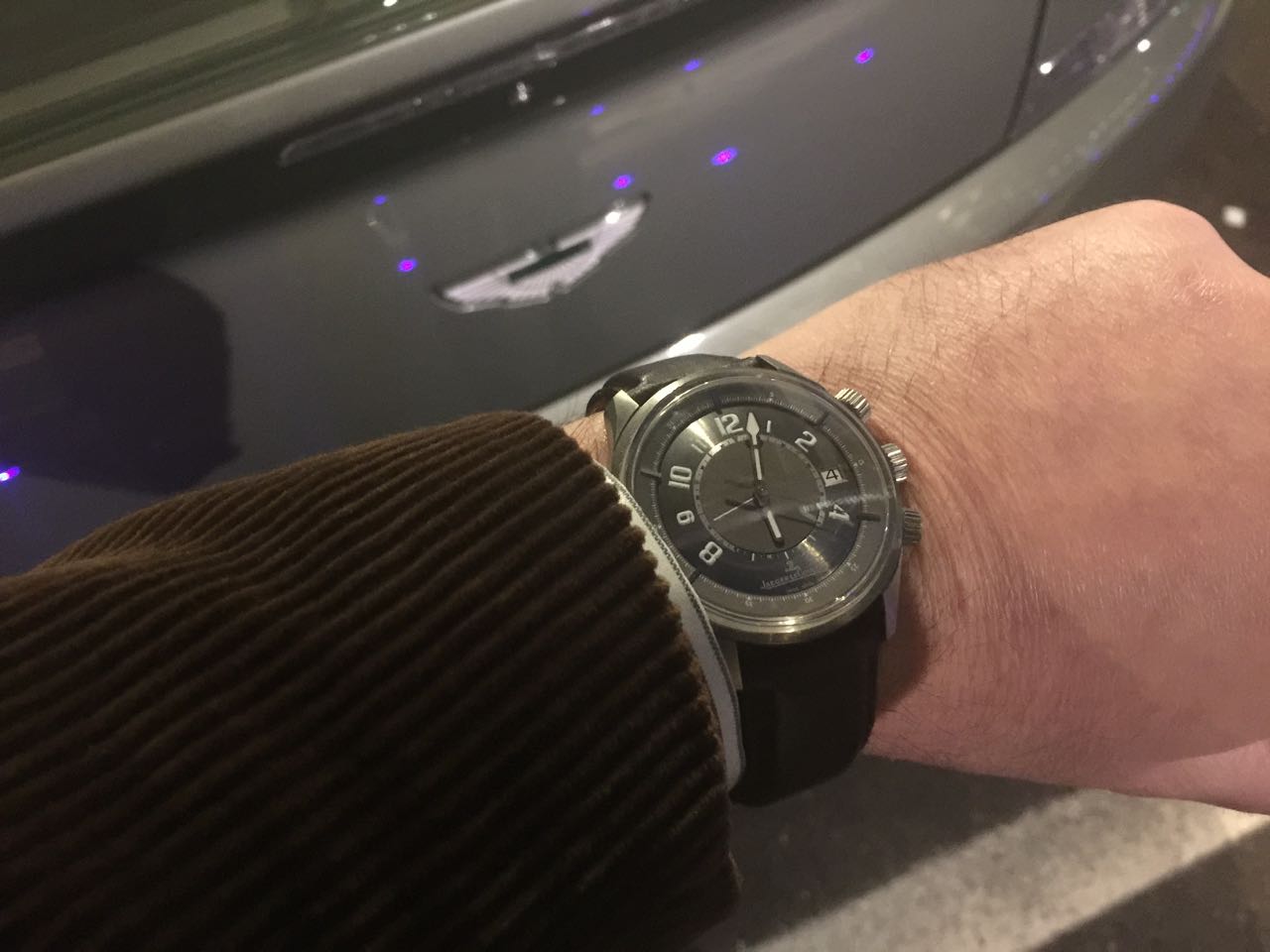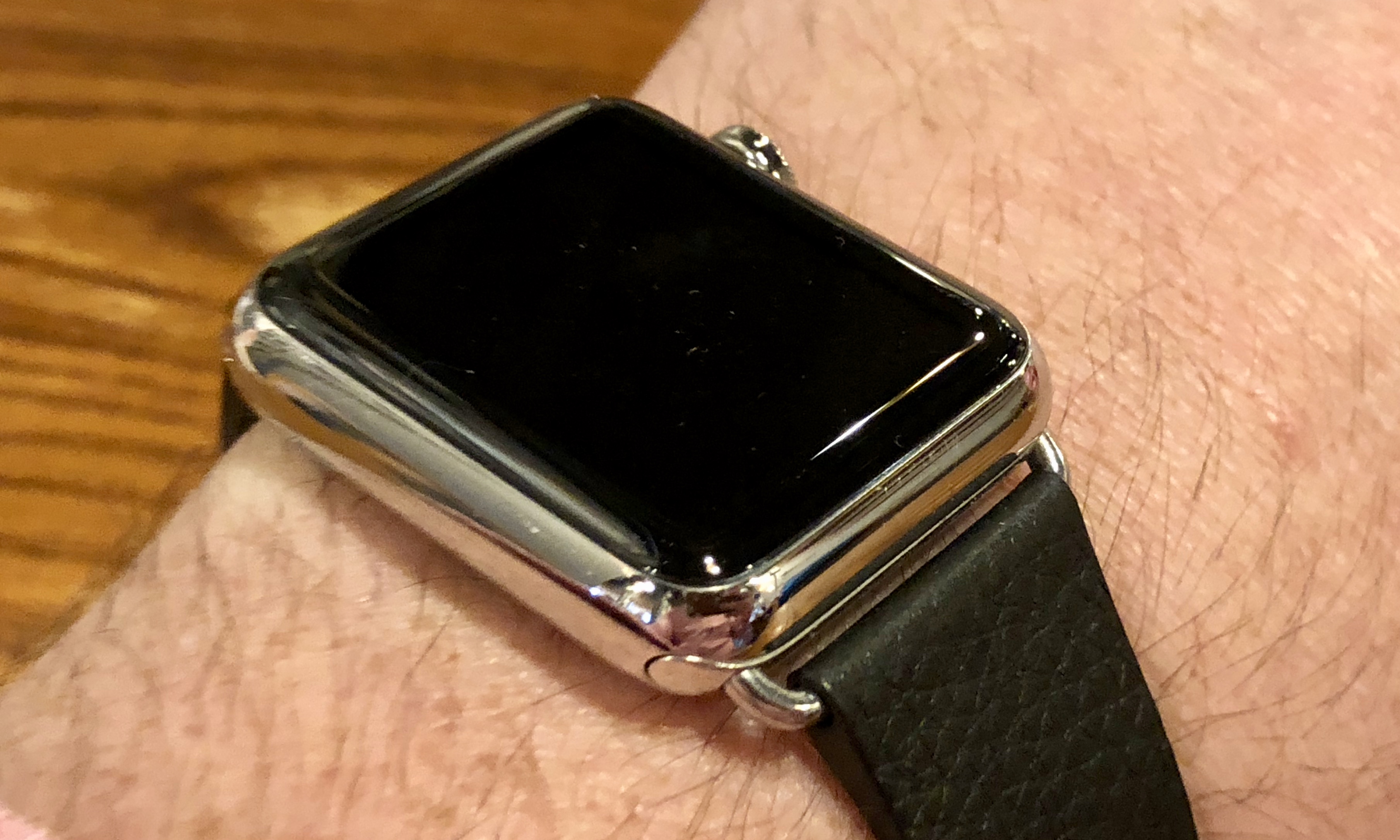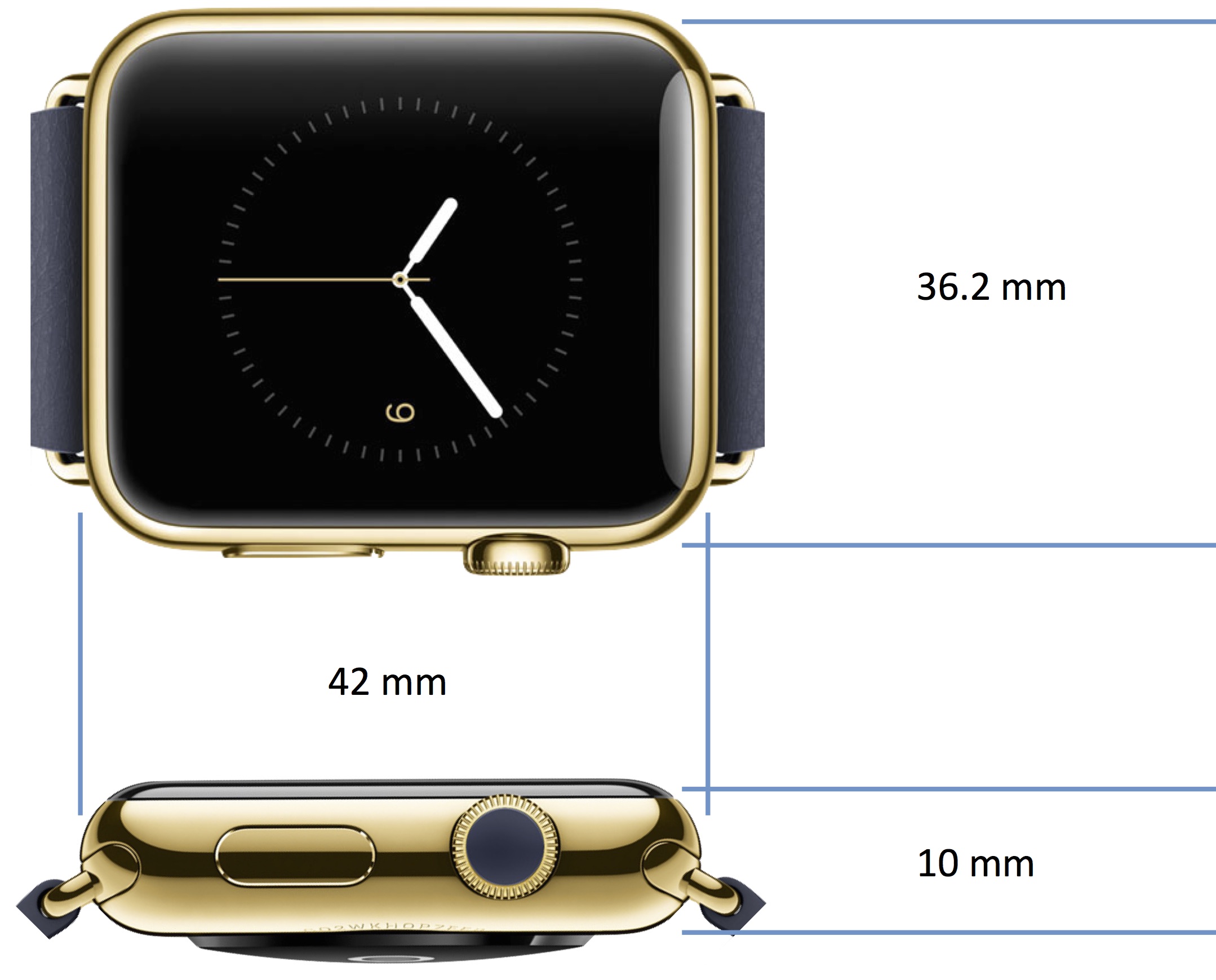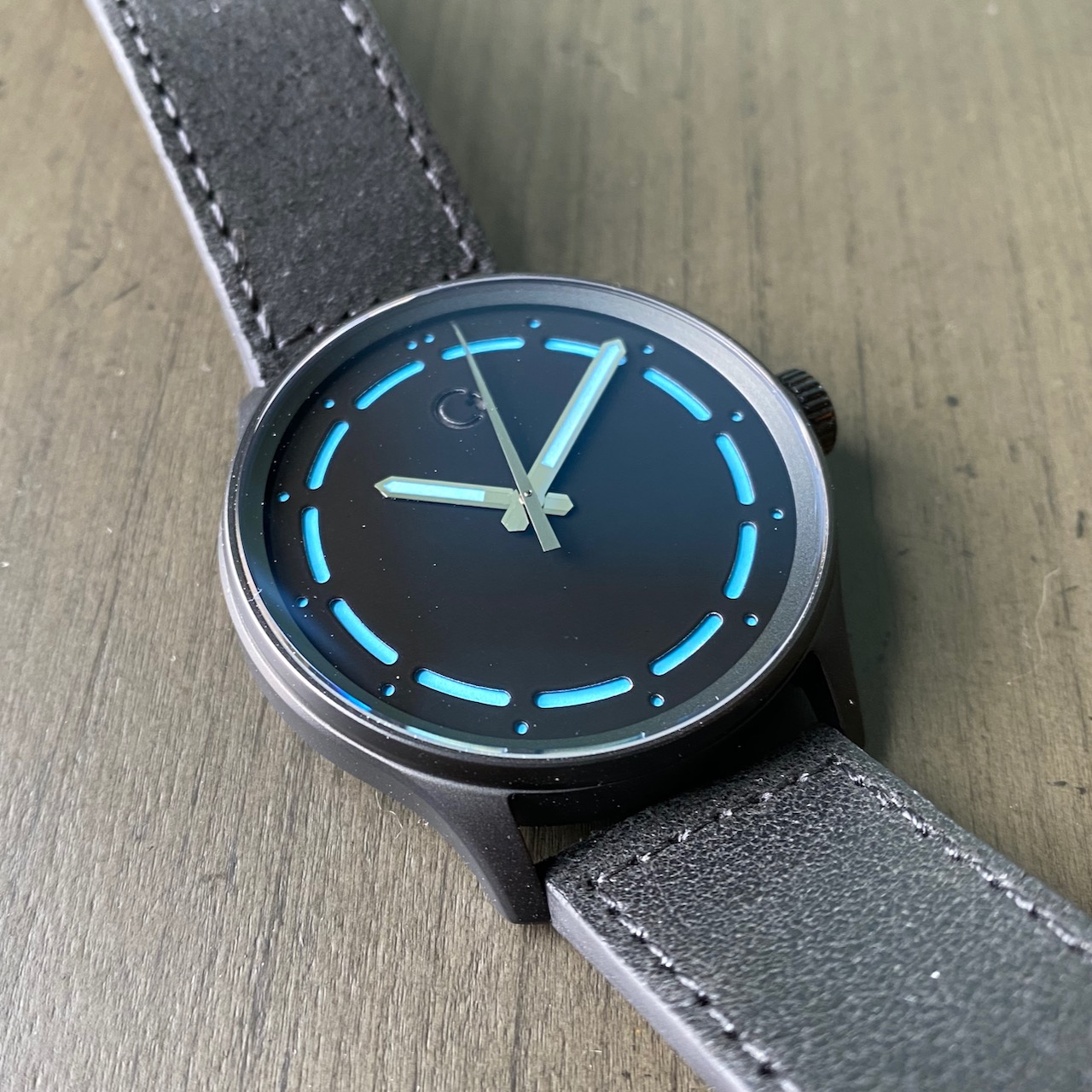I fell in love with this Jaeger-LeCoultre AMVOX1 Alarm Titanium limited edition on first sight and still love it just as much today. That’s why it’s one of the final watches in my “Watch A Day” series. The dial is lovely, with different textures, materials, and depths all coming together as a cohesive whole. It’s wonderfully legible and sports a cool complication. It’s got an amazing history from one of the best brands. And above all, it’s a wearable, enjoyable watch. What more could you ask?

As indicated by the name, the AMVOX1 was the first product of last decade’s collaboration between Jaeger-LeCoultre and Aston Martin. It combines materials and design meant to invoke the classic GT car maker with a storied complicated movement from the watchmaker. Although later AMVOX models delve into techno-design elements like today’s supercars, this piece maintains a purity reminiscent of classic GT cars like the famed DB line from Aston Martin.
Read More: Jaeger-LeCoultre AMVOX1 Alarm Titanium Limited Edition
Let’s start with the body. Being the limited-edition model, it’s constructed of titanium, relieving this rather-large watch of bulk while still maintaining wrist presence. The case is brushed and sculpted, a bit tapered below the lugs and crowns to further reduce visual thickness.
It features a rotating bezel, but it’s placed inside, under the crystal, like Jaeger-LeCoultre’s Polaris dive watches of the 1960s. This leads to one of the only mis-steps in the design: The “outer bezel” around the crystal is slightly submerged relative to the lugs, giving an odd profile on close examination. It also collects grime along the edge of the old-school looking tall, domed crystal.
Then there are the crowns. Many racing-themed watches feature a chronograph complication, so casual watch buyers associate a thicket of doo-dads on the side of the case with motorsports. Some dive watches feature multiple crowns as well, including the famous EPSA Compressor cases. But this isn’t a chronograph or a dive watch.
The center crown operates a simple rotating bezel for timekeeping. And although sure to be overlooked, the center disc of the dial rotates as well, setting the alarm function using the top crown. That crown also winds the barrel that powers the alarm, and disables the alarm when pulled out. This last bit is another odd ergonomic choice, since it means that the crown is usually left pulled out.
The bottom crown operates like a typical watch, winding the spring in first position (though this is an automatic), and setting the time in the second (complete with a hacking lever). I could do without the date window, especially since it’s set by moving back and forth across midnight rather than having a setting position on the crown.

Watch enthusiasts value depth above all else, and this watch has it in spades. The rotating bezel is angled inward toward the dial and features applied rhodium markers at 10-minute intervals. In between, a printed index shows 5-minute intervals (with numerals) and, odd for a non-chronograph, 1-minute and 1/4 minute markers. It’s not clear what all this signifies, but the printing is so fine it just fades into the design.
The hour markers are printed on a ruthenium ring, alternating large and small numerals. Apart from a cutout at 3:00 for the date window, these arc between 8 and 4, with an inner scale marking the quarter hours a half hour further in. This is meant to evoke the instruments on an Aston Martin, which were often produced by Jaeger. The lack of numerals at the bottom enhances this automotive tie-in, with simple thin markers at 5, 6, and 7. The middle of the dial is occupied by the matte alarm disc, with a single white line to show where it will be triggered.
The hands are sporty, filled with lume, with a blunt arrowhead on the minutes. The seconds hand is a treat, a bit of rhodium tapering from thin to an impossibly fine red tip. Although gray dials can sometimes hurt contrast, this setup is wonderfully legible. And at night, with the lume glowing, it’s just as readable.
The strap is a very subtle chocolate brown, made in small batches from the same Bridge of Weir leather used by Aston Martin for interior appointments. Mine came with the original strap, which I’m now using as my daily wear, but Jaeger-LeCoultre was good enough to source me a replacement just in case. I’m not sure if it was a new old stock item or crafted on demand, but it’s wonderful to work with a brand that will support its watches like this!

The single-deployant clasp is titanium to match the case, as are the crowns. These components are wonderfully crafted, with sharp edges and the “anchor” logo inscribed in them. The movement is lovely as well, finished even though it will never be seen. This kind of craftsmanship is the real differentiator of a high-end watch.
Since this was a used watch and one I wear often, I sent my AMVOX1 in to the Jaeger-LeCoultre service center a few years back. They returned it in as-new condition, certified for water resistance and ready for use. I intend to do just that, wearing it weekly at least!
I’m wearing and blogging about a different watch from my collection each day of April, 2018. Check back here for our “Watch A Day” series, follow us on Twitter and Instagram, and like us on Facebook!
Year
Country
Brand
Style
Material
Movement






Hey Stephen,
Great article here. Who would’ve have thought that alternating font sizes on the hour markers would look so good? Great job killing it!
I’d love to connect! I have plenty of rare Rolex watches and can provide images should you need them.
Have a great weekend.